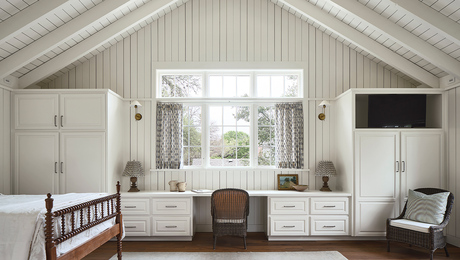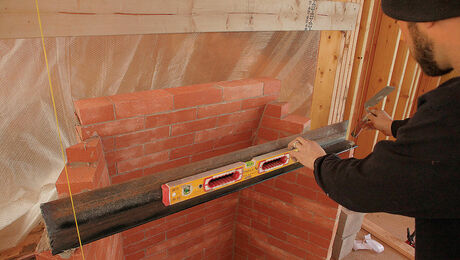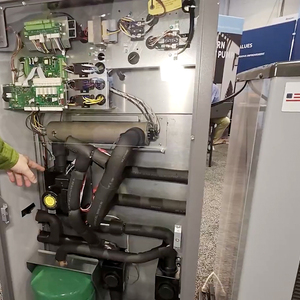Need to solder wet copper pipes
Not really, I know they have to be dry — but I’m waiting for them to dry and worrying that may never happen. The situation: I cut a leaking copper section out of the return line of a hot water heating system (century old house, radiators, pipes are 1 1/4 copper feeding iron). The pipes are pitched < 1/4 inch/foot, so are draining into my bucket very slowly. All the bleeder valves are open. I have the new copper ready to go (lots of fittings) but I’m afraid of bad sweat joints if I attach them to moist pipes (the attachment will be with copper to iron adapters. As soon as I attach, there will be drips into the copper as I am soldering it.
If this were a supply line to a sink, I’d use the bread trick, but this is a closed system and there is nowhere for the dissolved bread to go except the boiler and circulating pump. I fear the effects of mushy bread trapped in the system.
I know that there are push-on fittings now and that only old guys like me still sweat joints. My big box suppliers don’t stock them in 1 1/4 — would a plumbing supply house catering to the trade do so?
Any advice would be much appreciated.



















Replies
Put a vacuum on the dripping pipe for a minute or two to suck the water out. Have your torch and fitting ready and solder fast. I'd put a union on so you can finish the repairs without worrying about the drip.
Vacuum is good
and so is compressed air. You can stick a blowgun into the end of a dripping pipe, blow some air in (not a lot, you're not really trying to pressurize the pipe) and then wait as a little rush of water drips out.
The other thing to do is solder on some threaded adapters and use threaded parts for the repair, or solder on a valve or two that you can use to keep the drips back while you solder in the rest of the works. Then open the valves, of course.....
'small' wad of bread
Very often on a horizontal pipe you can flex it up or down a little bit (even a half inch will help). Flex it down for several minutes to drain, then flex it up (and prop/tie it in place) to do the soldering. Even if there's a slight seepage from other parts in the system, you can sometimes flex up enough to cut off the flow for several minutes.
1 1/4" copper
Try all stated above and be ready. A hand held propane torch will be tuff to do a 1 1/4" fitting.
A torch with Mapp or Accetteline gas will burn hotter. Run the flame up from the area working to heat the pipe up a bit and dry it out.
If they made a 1 1/4" sharkbite it probly cost $50.00
Good point
it's tough to do anything 1" or larger with a single propane torch. I've got a Turbo Torch with acetylene for the rare times when I have to work on the 1" copper water service here. I've seen plumbers team up with two torches on one large copper joint.
I was curious about that so I checked... Sharkbites top out at 1" size.
They actually make a commercial version of a bread ball. Looks like a horse pill that disolves. You'd probably have to go to a plumbing supply house to find out if they disolve better/more completely than bread.
I tried one of those once and it never would dissolve. Had to take the pipes apart to take it out.
Whatever method you use to de-water the line, remember to open the line to air at some other place in the system to allow steam to escape as you heat the joint--steam that may be produced when a little water comes in contact with the heated metal, maybe not enough to prevent the joint from reaching soldering temp, but a small amount that is produced maybe further down the line.
This steam, if it has no place to escape, will push a path thru the solder joint, thus a leak.
Or, if you boil all the water away to form steam, there will be a vacuum in the system as the steam cools, which can also suck a small path right thru the solder joint.
Having another opening in the system as you solder will prevent either problem.
Thanks for all the suggestions (I'm responding to the latest, but I appreciate them all). I'm still waiting for that drip to stop, but in the meantime am gearing up to use unions. My plan is to solder (on the bench) the parts that go between the pipes and then attach them with unions. I do have a Mapp torch, bearing in mind the problem in heating big fittings. The price of the unions (close to $30 each) made me blink.
I wonder how much it would have cost to have a real plumber do this. There is a fine line between DIY initiative and lunacy and I've probably crossed it, yet again.
I just saw the bill from a "real plumber" that charged the guy $450 to install the homeowner's own kitchen faucet; $325 to replace the front hose bib and $275 to replace the back hose bib; $437 to replace the main 1" shutoff valve.
Maybe $100 worth of material and 4 hrs' work.
So maybe yer makin good money on this project.
Probably too late for you but this might be a good option for someone else.
In a similar situation I used bread and installed a ball valve and a short piece of pipe. Then I turned the water on which flushed out the bread. Then I turned off the new ball valve and finished the job.
You can also purchase tools which can be installed to seal the pipe and then pulled out through the ball valve after you solder it. Basically the tool does what the bread does.
Then of course there's the trick of freezing the pipe with a CO2 fire extinguisher.